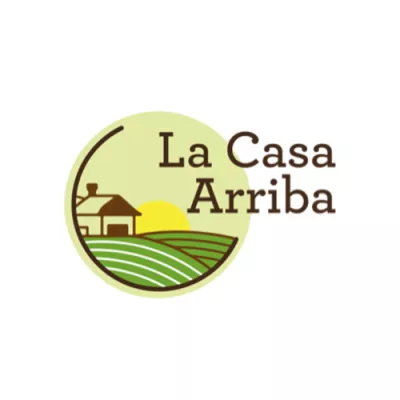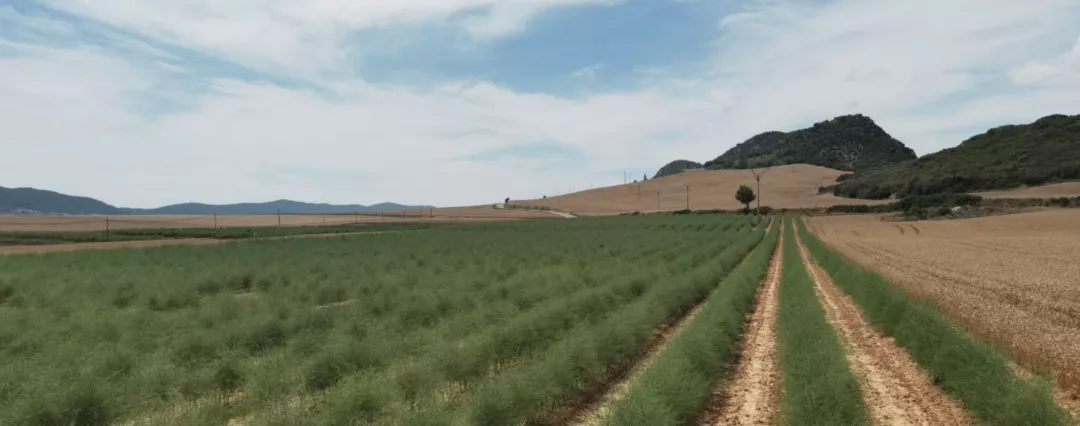General information
RDP Priority
- P2. Competitiveness
RDP Focus Area
- 2B: Entry of skilled/younger farmers
RDP Measure
- M04: Investments in physical assets
- M06: Farm & business development
Beneficiary type
- Young farmer
Summary
The farm, La Casa Arriba, produces vegetables, cereal, olives, and truffles. It was created in 2016 by Javier Pérez de Zabalza, a young farmer, in the region of Navarra, Spain. Over the years, EAFRD funding supported the farmer in expanding and diversifying the range of crops produced. Further investments in smart equipment enabled him to improve the efficiency of crop management and helped him to save water. These improvements created two permanent jobs and supported Javier in achieving his two aims: making agriculture his livelihood and owning a modern farm that is effectively managed.
The improvements, that were achieved through EAFRD support, inspired Javier to progress further by progressively increasing his own involvement in the distribution and marketing of his products, focusing on direct sales methods.
Results
- The farm expansion into asparagus and other crop plantations created two permanent jobs.
- The investments in digitalisation have improved the effectiveness and efficiency of farming in numerous ways: GPS, for example, ensured that vegetables can be grown between lanes, making it possible to reduce the use of pesticides.
- Fencing the truffle crops reduced the impact of wildlife on the crops and maximised the harvest.
- The highly efficient drip irrigation, installed in 2020/2021, represented a qualitative leap in the efficiency of water usage.

Promoter
Javier Pérez de Zabalza
Funding
RDP contribution: 127 860 (EUR)
EAFRD: 52 310 (EUR)
National/Regional: 75 550 (EUR)
Ressources
Documents
Good Practice Report - La Casa Arriba
(PDF – 996.18 Ko)
Context
The project promoter, Javier Pérez de Zabalza, comes from a family of farmers with a tradition of cereal production. He studied agricultural technical engineering, with the aim of starting his own business. This became reality in 2016, when Javier, as a young farm owner, set up in Ibiricu de Yerri and Legaria (Navarra) in Spain, aiming to cultivate cereal, asparagus, olive trees, and truffles on oak.
The first years were solely dedicated to the production of crops. However, Javier became increasingly aware of how much of the quality and added value of his crops was lost on the way from the farm to the consumer due to intermediaries. The young farmer felt that, to preserve the high quality and added value of his produce, he needed to get involved personally in the various steps of the agri-food value chain (packaging, selection, storage, distribution, etc.). For this purpose, he created his own commercial brand and began selling directly to consumers.
In addition to the work of the farm owner, the 25-ha farm requires a team of two permanent workers (labourer, tractor driver), and seasonal workers during demanding periods.
Over the years, the farm has developed into a more professional business that includes a food store in Murieta, “La Casa Arriba”, which also gives its name to the brand that identifies the asparagus from the farm. The shop also offers other products from the area, such as tinned food from Navarra, organic wine and Arróniz oil.
Objectives
Accessing EAFRD funding had a number of key objectives. Overall, the aim was to enable the young farmer to make a professional living from agriculture, whereby the farm needed to adapt effectively to market needs, and apply smart farming practices and effective irrigation systems. This required relevant business management skills. There was also the ambition to expand the asparagus farm operations by adding olive groves and truffle plantations on holm oak. Across all this, the productivity of the farm needed improving, particularly regarding more efficient water consumption. Finally, the plan was to sell products directly to consumers and minimise the number of intermediaries as much as possible.
Activities
The activities that were financed by EAFRD were implemented during two time periods.
From 2016 to 2017 the asparagus plantation (3 ha) was extended, both irrigated (sprinkler irrigation system) and rainfed, and a new olive tree plantation (1 ha) and truffle on oak area (1 ha) were planted. To protect the new truffle crops from wildlife, a fence was installed. Further investments included the installation of a programmable sprinkler irrigation system in relevant plots (asparagus and fresh white beans) and the implementation of a computer programme that allows for on-site control of the use of pesticides. This computer programme also operates across the rest of the warehouses and machinery, representing an innovative system for scheduling shifts, using machinery, maintaining stocks, managing breakdowns, tracing crops, etc. Finally, a range of machinery was acquired to improve and facilitate fieldwork. This included a GPS system, a harrow, two tractors, and a brush cutter.
During the second period, from 2020 to 2021, EAFRD funding supported the second expansion of the asparagus plantation. This included the implementation of a localised drip irrigation system in some of the asparagus plots, along with investing in highly efficient irrigation equipment for the use of water and energy. In addition, computer programmes were installed that enabled the farmer to control the water supply through an application without having to go to the plantation.
These improvements were complemented by other, non-EAFRD-funded activities focusing on direct marketing and direct sales. This included opening a food store to support the direct sales of the farm’s produce (asparagus, tomato, peppers, chilli peppers). The shop, La Casa Arriba, is open seven days a week, and employs one person.
Main results
EAFRD-funded activities generated a modern farm, with an efficient use of resources that enhance the quality of farm production.
In detail, the following results were obtained:
- The farm expansion into asparagus and other crop plantations created two permanent jobs.
- The investments in digitalisation improved the effectiveness and efficiency of farming tasks in numerous ways: GPS, for example, ensures that the tractor's footprint goes along the cultivation lanes and that vegetables can be grown between the lanes, making it possible to reduce the use of pesticides.
- The fencing of the truffle crops reduced the impact of wildlife on crops, and thereby maximised the harvest.
- The highly efficient drip irrigation, installed in 2020/2021, represented a qualitative leap in the efficiency of water usage. While the sprinkler irrigation system that was installed in 2016/2017 had already led to significant improvements to the previously used blanket irrigation, it did not compare with the efficiencies achieved with the new drip irrigation system.
Key lessons
- When implementing similar EAFRD-funded projects, persistence is required in dealing with the various administrative procedures. The administration of the financial support has been challenging due to the competitiveness between applicants. More specific and separate calls for small and large producers, or a specific focus on product processing only, would help reduce the competitiveness and create a better and fairer access to resources.
- It is important to diversify and grow different varieties of crops to improve the viability of a farm.
- It is advantageous if producers have confidence in their ability to start their own farm and sell directly at fair prices.
Knowing that I know how to produce well and that I can create a good product, together with the feeling I had that the value of the product was lost among intermediaries and did not reach the final consumer, are the two reasons that prompted me to carry out direct sales to the consumer. Seeing that the product reaches the consumer in the best possible way is what satisfies you the most as a producer.
It is possible to succeed. Let's not limit ourselves to producing and selling our product in poor conditions. We can sell it directly, although it requires time and persistence in managing bureaucratic procedures.
